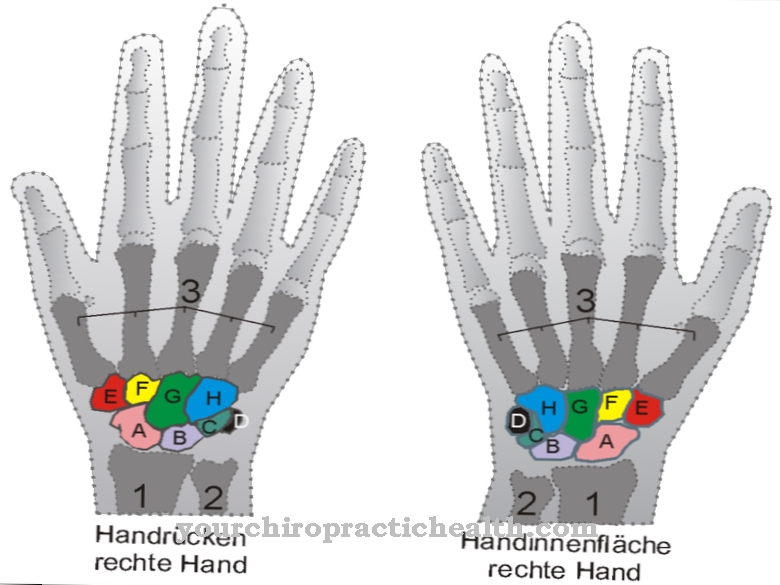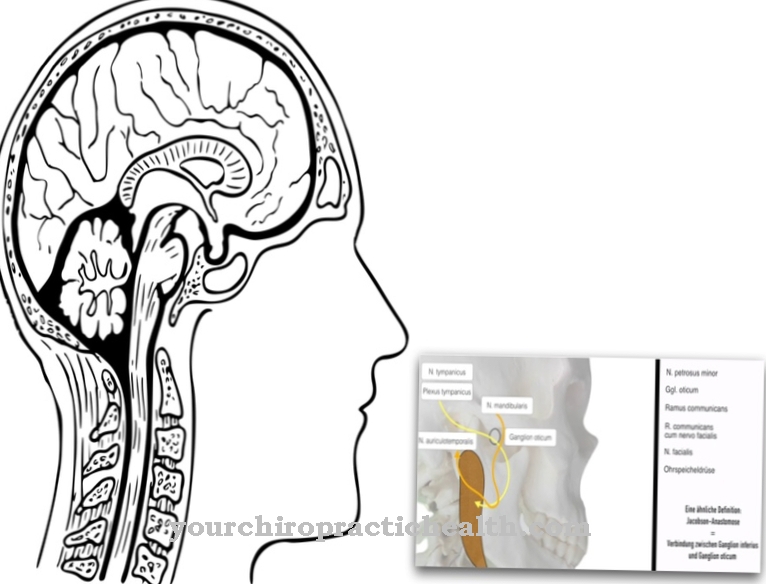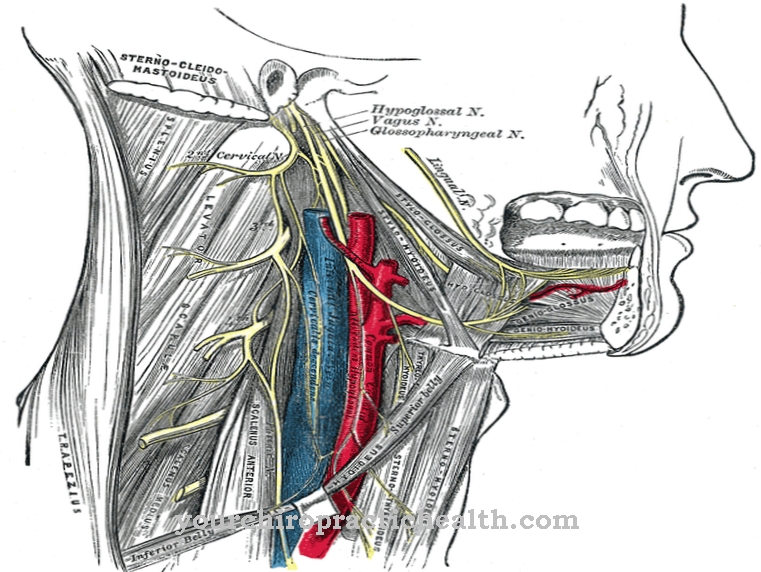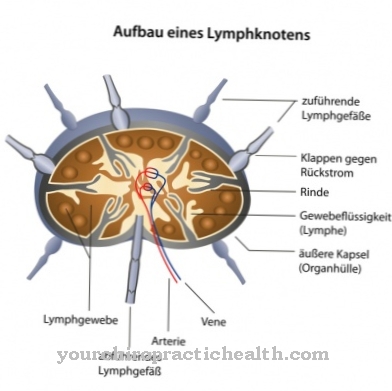Of the Zygomatic nerve supplies the skin in the upper face area. It belongs to the 5th cranial nerve, the trigeminal nerve. Its job is to innervate the skin on the cheeks.
What is the zygomatic nerve?
The zygomatic nerve is also called Zygomatic nerve designated. It is part of the central nervous system. It is assigned to the V of the total of XII cranial nerves. This is the trigeminal nerve, which is also the thickest brainstem nerve.
The trigeminal nerve supplies the face of the human organism with its branches. It is divided into the opthalmic nerve (V1), the maxillary nerve (V2) and the mandibular nerve (V3). The zygomatic nerve is a branch of the maxillary nerve. This supplies the skin on the face of the cheek between the eyes and the lips. The zygomatic nerve is responsible for supplying the skin on the cheekbone and the temporal area. Therefore, its supply goes to just under the lower eyelid. In addition, fibers pull from one of its branches to the lacrimal gland. The zygomatic nerve enters the lower part of the eye socket and moves downwards. This is made up of a total of seven bones, one of which is the cheekbone.
Anatomy & structure
The trigeminal nerve emerges at the pons and runs over the rock pyramid to the meninges, the dura mater. It forms the trigeminal ganglion. After the ganglion, the trigeminal nerve forks into three branches. These are the ophthalmic nerve, maxillary nerve, and mandibular nerve.
After exiting the ganglion, the maxillary nerve runs along the wall of the cavernous sinus. It then enters the foramen through the base of the skull. It appears below it in the ptergopalatine fossa and divides into three branches. These are the rami ganglionares, the zygomatic nerve and the infraorbital nerve. The zygomatic nerve receives fibers from the ganglion in the ptergopalatine fossa. Then it enters the eye socket from below through the inferior orbital fissure.
In the eye socket, it releases its fibers as the communicating ramus to the lacrimal nerve. These move further into the lacrimal gland. It divides into the zygomaticotemporal nerve and the zygomaticofacial nerve. The zygomatic nerve then runs forward and pierces the zygomatic bone, the zygomaticum. It continues through the temporal fossa and supplies the skin over the zygomatic bone and the front area of the temples.
Function & tasks
The main task of the zygomatic nerve is to supply the skin at the level of the cheeks. The cheekbone is formed from the cheekbone and is located on the lateral half of the face below the eye socket. This is the orbit. The zygomatic nerve innervates the skin of the zygomatic bone up to the temples.
Skin perception impulses are received and passed on through the skin. The sensation of pain, contact stimuli or temperature impulses are registered by the cells of the skin and transmitted to the brain via the nerve fibers. The impulses are evaluated in corresponding systems of the brain. Subsequently, corresponding emotions or impulses for action are triggered.
With a pleasant impulse, a positive reaction can be expected and with pain or too high temperature there will be defense reactions. In addition, fibers of the zygomatic nerve supply the lacrimal gland. The fluid produced in the gland has important supply and social functions. It ensures the functionality of the eye, helps to protect the eye from contamination and cleans it. As an expression of grief, tears play an important role in emotional processing.
You can find your medication here
➔ Medicines for painDiseases
Injuries and damage from accidents or falls can damage the facial bones. A fracture or bruise of the zygomatic bone, or the temporal bone, can injure the fibers of the zygomatic nerve.
This means that the skin in this region is no longer adequately supplied. This leads to a feeling of numbness or impaired sensitivity. If blood vessels are also destroyed in the event of a break, the skin in the area of the cheeks can no longer be adequately supplied. As a result, the affected person may get a drooping lower eyelid and touch can no longer be sufficiently perceived.
In principle, injured nerves in the facial area have the ability to regenerate. Therefore, most injuries will heal on their own after a few weeks. A surgical intervention is usually not necessary. Protecting the affected regions can already help, especially if the nerve has been squeezed or stretched. If the damage is too severe, surgeons usually perform a transplant of the nerve fibers. This happens especially when the nerve fibers have been partially or completely severed. There is a chance that damaged nerves will regenerate, even if there is no guarantee that it will. The healing process will take several months after surgery.
In addition, the skin on the face can become overly sensitive. Even the smallest touch can cause pain and even real pain attacks. Even if the trigger is in the area of the jaw and teeth, inflammation within the nerves can spread to the entire face. In particular, tooth inflammation leads to a feeling of pain in many of those affected, which they describe as barely bearable.













.jpg)

.jpg)
.jpg)











.jpg)